
Feb 2020
MR6.5K-38
Portable Mid-Rise Scissor Lift
6,500 lbs. Capacity
INSTALLATION & OPERATION
MANUAL

2
MR6.5K-38
Feb 2020
CONTENT
SAFETY INFORMATION
· Note, Caution and Warning
· Important Information
· Safety Instructions
TECHNICAL INFORMATION
· Product Description
· Specifications
BEFORE USING
· Site Selection
· Surface Condition
· Operating Condition
INSTALLATION INSTRUCTIONS
· Required Tools
· Unloading Lift
· Un-banding Lift
· Lift Installation / Assembly
· Starting Up / Testing
· Final Adjustments
OPERATION INSTRUCTIONS
· Vehicle Positioning
· Lift Preparation
· Loading Lift
· Raise & Lowering Lift
· Caster Assembly Installation & Operation
· Inspection, Maintenance & Cleaning
· Trouble-Shooting Guide
· Power Unit Priming Procedure
EXPLODED VIEWS & PARTS LIST
LIMITED WARRANTY

3
MR6.5K-38
Feb 2020
SAFETY INFORMATION
Note, Caution and Warning
This document uses the following notations: Note, Caution and Warning – to alert you to special instructions,
tips, or hazards for a given procedure. Please familiarize yourself with the notation explanations described
below.
Indicates important information that requires special attention, such as a procedure for a
specific vehicle, or tips on operating the equipment.
Indicates the potential for damage to equipment, accessories or the vehicle unless the
instructions or procedure are followed specifically.
Indicates the potential for property damage, personal injury or death due to hazards
associated with the equipment, vehicle or environment. Do not perform any procedures
until you have read and understood the warning instructions.
Important Information
1. Read this manual thoroughly before installing, operating or maintaining the lift.
2. This lift is designed for indoor use only and should not be installed in a pit or depression.
3. The lifts have specific electrical requirements as described in the Installation Instructions section of this
manual.
4. This lift has a minimum ceiling height requirement as described in the Installation Instructions section of
this manual.
5. Failure by the owner to provide the recommended shelter, mounting surface, electrical supply, and
ceiling height could result in unsatisfactory lift performance, property damage or personal injury.
6. The operation of the lift is permitted by authorized persons only.

4
MR6.5K-38
Feb 2020
Safety Instructions
1. Do not raise a vehicle on the lift until the installation is completed as described in this manual.
2. Technicians should be trained to use and care for the lift by familiarizing themselves with the manual,
including Note, Caution and Warning information. The lift should never be operated by an untrained
person.
3. Always position the pads properly out of the way before pulling the vehicle into or out of the service
bay. Failure to do so could damage the vehicle and/or the lift.
4. Do not overload the lift. The capacity of the lift is shown on cover of this manual and on the lift’s serial
number tag.
5. Positioning the vehicle is very important. Only trained technicians should position the vehicle on the lift.
Never allow anyone to stand in the path of the vehicle as it is being positioned and never raise
vehicle with passengers inside.
6. Position the pads to the vehicle manufacturer’s recommended pickup points. Raise the lift until the
pads make contact with the vehicle. Make sure the pads have properly engaged the vehicle’s pick-up
points before raising the lift to a working height.
7. Keep everyone clear of the lift when the lift is moving, the locking mechanism is disengaged or if the
vehicle is in danger of falling.
8. Unauthorized personnel should never be in the shop area when the lift is in use.
9. Inspect the lift daily. The lift should never be operated if it has damaged components or is
malfunctioning. Only qualified technicians should service the lift. Replace damaged components
with manufacturer’s parts, or equivalent.
10. Keep the area around the lift clear of obstacles.
11. Never override the self-returning lift controls.
12. Avoid excessive rocking of the vehicle when it is on the lift.
13. To reduce the risk of personal injury, keep hair, loose clothing, fingers, and all body parts away from
moving parts.
14. To reduce the risk of electric shock, do not use the lift when wet, do not expose the lift to rain.
15. To reduce the risk of fire, do not operate equipment in the vicinity of open containers of flammable
liquids (gasoline).
16. Use the lift only as described in this manual, use only manufacturer’s recommended attachments.
17. Unusual vehicles, such as limousines, RV’s, and long wheelbase vehicles, may not be suitable
for lifting on this equipment. If necessary, consult with the manufacturer or the manufacturer’s
representative.
18. The maintenance procedures described in this manual can be done by the lift’s owner/employer. Any
other procedure should only be performed by trained lift service personnel. These restricted
procedures include, but are not limited to, the following: cylinder replacement, platform & safety
latch replacement and motor replacement.
19. Anyone who will be in the vicinity of the lift when it is in use should familiarize themselves with any
Caution, Warning, and Safety related decals supplied with this lift, and replace them if they are illegible
or missing.

5
MR6.5K-38
Feb 2020
TECHNICAL INFORMATION
Product Description
The MR6.5K-38 is a portable 6,500 lb. hydraulic mid-rise scissor frame contact lift, equipped with twin hydraulic
cylinders & single point pneumatic lock release, while incorporating the latest safety technologies. The lift
consists of a fixed structural scissor lift, a mobile unit kit (brackets, wheels & trolley), hydraulic power control
system with safety devices, fully capable for lifting cars, light vans and safely holding them in an elevated
position for wheel service, brake work, inspections & detailing.
Specifications
Specifications MR6.5K-38
Lifting Capacity: 6,500 lbs.
Overall Length 77”
Overall Width 75.2”
Max Lifting Height 38”
Min. Pad Height 4”
Lifting Speed: 40 sec.
Width Between Platforms 33.2”
Width of Platforms 18.2”
Length of Platforms 56”
Length of Platform Extensions 10.6”
Power 115V-20 Amp / 1PH
Air Supply (Required) 90 - 125 PSI
Ship Weight 1,355 lbs.

6
MR6.5K-38
Feb 2020
BEFORE USING
Site Selection
The Lift is designed for indoor use only. Application in a room with explosion hazard is not permitted. Placing
the lift in a wet place, such as car wash bay, is prohibited. Ensure to check the desired location for possible
obstructions such as a low ceiling, overhead lines, adequate working area, access ways and exits. Make sure
to allow a minimum space of 12 to 14 feet in front and behind the Lift to accommodate all vehicles.
Certain allowances should be made for special vehicle requirements or unusual floor plans.
Surface Condition
Do not use the Lift on any type of asphalt or soft surface. Ensure lift is placed on a dry, oil & grease free, level
concrete surface capable of supporting the weight of the Lift with a vehicle. Do not use Lift on concrete
expansion seams or cracked, defective concrete. Failure to accomplish the foundation requirement may cause
lift instability, which could result in personal injury.
Operating Condition
Lift is not intended for outdoor use and has an operating ambient temperature range of 41º - 104ºF (5º - 40ºC).

7
MR6.5K-38
Feb 2020
INSTALLATION INSTRUCTIONS
You will need common hand tools that most homeowners have, like a hammer,
screwdrivers and pliers, but in addition, you may need some tools that are not common.
Each installation is somewhat different and depends on how much room you have to
work around the lift.
Required Tools
1. Forklift
2. Metal Shears
3. Socket Wrenches with Ratchet
4. Adjustable Wrench
5. Pliers
6. Flat Blade Screwdriver
7. Gloves
Unloading Lift
You’ll need a forklift that can handle about 2,000 to 2,300 pounds and operate on a
smooth surface.
Un-banding Lift
The steel bands which secure the lift parts to the pallets are heavy duty. You’ll need a
pair of metal shears or tin snips to cut the steel bands. Be very careful when doing this
because the bands will tend to fly apart when they are cut, and the heavy lift parts may
shift when freed from the steel bands. Stand to the side of the steel bands when cutting
them, while using gloves when removing the cut bands because they have sharp edges.
You can move the large piece to the garage with the forklift. Other smaller pieces can be
moved manually.
STEP 1: Install the Platform Ramp Extensions
A. Locate and connect Ramp Extensions Assemblies by inserting the Pivot Pins through each side
of the Ramp Extension to connect to each end of Platforms. (Figs. 1 & 2)
B. Install Snap Rings to both ends of Pivot Pins to secure Ramp Extensions Assemblies to
Platforms. (Figs. 1 & 2)
Fig. 1
Fig. 1 Fig. 2

8
MR6.5K-38
Feb 2020
STEP 2: Assemble Power Unit Dolly
A. Locate Dolly components and assemble as shown in (Fig 3.) and in Exploded View section.
STEP 3: Attach Power Unit to Dolly
A. Remove Power Unit from the carton.
B. Use provided Nuts & Bolts to attach Power Unit to Dolly’s mount plate (Fig. 4).
Fig. 3 Fig. 4
STEP 4: Hydraulic Hose Connections
A. Connect short Hydraulic Hose to the pump’s output port, then to side of Valve Connector on
backside of Dolly Stand. (Fig. 5)
B. Connect both hydraulic hoses from lift cylinders to bottom side of Valve Connector (Fig. 6)
Fig. 5 Fig. 6

9
MR6.5K-38
Feb 2020
STEP 5: Air Tubing Connections for Safety Latches
A. Connect the Air Tube (6mm) to the Air Valve Switch located on side of Dolly Stand. (Fig. 7)
Fig. 7
STEP 6: Filling Reservoir Tank
A. Remove the black fill cap on reservoir tank and fill with 6 quarts of Non-Detergent / Non-
Foaming Hydraulic Oil - SAE-10, AW 32 or equivalent. Ensure not to fill past the MAX Fill Line
on the reservoir tank.
STEP 7: AC Power Supply Connection
A. Connect the 115VAC electrical power to the Power Unit’s three prong electrical plug. Ensure to
use proper size extension cord and plug type for 20 Amps (Fig 5.)
B. Ensure power supply incorporates 20 Amp breaker service for safety.
STEP 8: Lift Lubrication
A. Ensure to lubricate all sliding components with heavy duty white lithium bearing grease.
‘P’ is for compressed
Air Inlet Shop Supply
(90 - 125 PSI)
‘A’ is for connection
to the Air Cylinders
for Safety Latches

10
MR6.5K-38
Feb 2020
Starting Up / Testing
A. Push the ‘start button’ on the motor pump to prime the hydraulic oil into the cylinders on the lift.
The lift will rise with lock latches passing over the lock ladders (Fig. 8).
B. Release the start button to stop the lift from rising. Press down on the ‘lowering valve lever’ and
the lift will lower down and automatically to engage the next lower lock height (Fig. 8).
Fig. 8
C. Push the ‘start button’ just 2-3 seconds to slightly raise the frame. The safety latches will
disengage from the lock ladder notches.
D. While pressing down & holding the air lock ‘release knob’, also press down on the power unit’s
‘lowering valve lever’ to lower the lift down to the ground.
Final Adjustment
1. If any problems are encountered, do not proceed with subsequent steps. Instead, resolve the problem
before proceeding by referencing the troubleshooting portion of the Owner’s Manual section of this
manual.
2. Raise the lift empty to the top of its travel and lower it to the floor three (3) times to remove the
remaining air from the hydraulic system.
3. The latches should click together as the lift is being raised.
4. After cycling the lift (3) times, check for any hydraulic and/or air leakages. Tighten connections as
required.
5. Ensure to lubricate all sliding components with heavy duty white lithium bearing grease.

11
MR6.5K-38
Feb 2020
OPERATION INSTRUCTIONS
To avoid personal injury and/or property damage, permit only trained personnel
to operate lift. After reviewing these instructions, get familiar with lift controls by
running the lift through a few cycles before loading vehicle on the lift.
Always lift the vehicle using all four adapters. NEVER raise just one end, one corner,
or one side of vehicle.
Always lift the vehicle using all four adapters. NEVER raise just one end, one corner,
or one side of vehicle.
The heavy end of the vehicle MUST put on the side as shown in the figure.
Vehicle Positioning

12
MR6.5K-38
Feb 2020

13
MR6.5K-38
Feb 2020
Lift Preparation
Lift must be fully lowered, and area clear of all personnel before a vehicle is put on the lift.
Loading Lift
Position the adapters at vehicle manufacturer’s recommended lift points. Use intermediate, high step, or
optional adapters for under body clearance when required.
Typical Lifting Points. Some vehicles may have the manufacturer’s Service Lift Point
locations identified by triangle shape marks on its under platform. Also, there may be a
label located on the right front door lock face showing specific vehicle lift points. If the
specific vehicle lift points are not identified, refer to vehicle’s operation manual or
consult the dealer. ALWAYS follow the operating instructions supplied with the lift.
To Raise Lift
1. Push UP / START button on power unit motor.
2. Raise lift until it touches the frame of the vehicle.
3. Check support adapters for secure contact at vehicle manufacturer’s recommended lift points.
4. Continue to raise to desired height, only if vehicle is secure on lift
5. Repeat complete spotting, loading and raising procedures, if required.
6. Push the power unit’s LOWERING VALVE LEVER to lower the vehicle to the locking position.
DO NOT go under Vehicle if locking latches are not engaged.
Before attempting to lift Pickup Trucks or other Truck Frame Vehicles, be sure that:
· Vehicle frame is strong enough to support its weight and has not been weakened by
modification or corrosion.
· Vehicle individual axle weight does not exceed one-half lift capacity.
· Adapters are in secure contact with frame at vehicle manufacturers recommended lift point.
· Vehicle is stable on lift.
To Lower Lift
1. Check all danger points of the lift and be sure that there are no objects or people in the working area
around the lift or on the lift.
2. In order to lower the lift to the required working height or to its lowest (or fully collapsed) position, First
raise the lift approx. 2" to clear the locking latches. Then push the air-valve button and when keeping it
be pressed, also push the LOWERING VALVE LEVER on the power unit.
3. Observe the complete lowering process.
4. When the lift is in its lowest position, remove the adaptor supports.
5. Carefully drive the vehicle off the lift.
Remain clear of lift when lowering vehicle. Observe pinch point warning decals.
If lift is not operating properly, DO NOT use until adjustment or repairs are made by
qualified lift service personnel.

14
MR6.5K-38
Feb 2020
Caster Assembly Installation & Operation for Lift Portability (Optional)
1. Position Lift to the lowest position.
2. Remove Vehicle from Lift.
3. Raise Lift to approx. 20” (500mm).
4. Install the Caster Assemblies towards the inside of lift frame, as shown below.
a. Place Fixed Casters (2) to the mount bars welded to lift frame.
b. Place Swivel Caster (1) to the single welded mount bar welded to opposite side of lift frame.
5. Lower Lift to the lowest position. Simultaneously, the lift will raise onto the Caster Assemblies allowing
for lift portability.
6. Use the Pull / Tow Bar to maneuver the lift into position.
7. Remove the Pull / Tow Bar & Caster Assemblies once the lift is placed in the new location.
Ensure to Maneuver & Position lift on a Dry and Level Surface meeting the Site & Surface
Lift requirements noted on Page 6.
‘Fixed’ Casters Positions
‘Swivel’ Caster Position
Pull / Tow Bar

15
MR6.5K-38
Feb 2020
Inspection, Maintenance & Cleaning
Always unplug the Power Cord from the electrical outlet before performing any
inspection, adjustments, maintenance and/or cleaning.
BEFORE EACH USE: Inspect the general condition of the Lift. Check for loose screws, misalignment
or binding of moving parts, broken parts, damaged electrical wiring and hoses, and any other condition
that may affect its safe operation. If abnormal noise or vibration occurs, have the problem identified and
corrected before further use. Do not use a damaged equipment.
DAILY: With compressed air or vacuum, remove all dirt and debris from the Lift. Also, use a detergent
or mild solvent to remove oil and grease from the unit. Then, use a premium quality, machine oil to
lubricate all moving parts.
MONTHLY: With the lift fully lowered, check the level of hydraulic oil in the Reservoir Tank is close to
the Max Fill Line. If not, remove the Fill Cap and add premium quality hydraulic oil until the level of oil
is even with the Max Fill Line. After filling, place the Fill Cap to Reservoir Tank.
Never Add Hydraulic Fluid while Lift is in raised position!!

16
MR6.5K-38
Feb 2020
Trouble-Shooting Guide
1. Motor Does Not Run:
A. Breaker or fuse blown............ Call electrician
B. Faulty wiring connections...... Call electrician
C. Defective start button.............Call electrician
D. Defective capacitor................ Call electrician
2. Motor Runs but Will Not Raise:
A. Oil level too low......................Oil level should be at the MAX Fill Line with lift fully lowered.
B. Check for proper clearance for the release valve’s stem seat.
C. Remove the check valve cover and clean ball and seat.
D. A piece of trash is under the Release Valve. Push handle down and push the up button at the
same time. Hold for 10-15 seconds. This should flush the valve out to remove trash.
3. Motor Runs but Will Not Raise Vehicle:
A. Motor running on low voltage.............Call electrician
B. Lift is overloaded................................Check vehicle’s gross weight
C. Defective pressure relief valve.
4. Oil Blows Out Power Unit Fill Cap:
A. Oil reservoir overfilled.
B. Lift lowered too quickly while under a heavy load.
5. Motor Hums and Will Not Run:
A. Lift overloaded....................... Remove excessive weight from lift.
B. Bad capacitor......................... Call electrician.
C. Low voltage............................Call electrician.
D. Faulty wiring...........................Call electrician.
6. Lift Jerks Up and Down:
A. Air in hydraulic system........... Raise lift all the way to top and return to floor. Repeat 4-6 times
with intervals at least 2 minutes apart. Ensure NOT to overheat the power unit.
7. Oil Leaks:
A. Power unit..............................If the power unit leaks hydraulic oil around the tank-mounting
flange, check the oil level in the tank. The fluid level should not be above the MAX Fill Line.
B. Rod end of cylinder................ The rod seal of the cylinder is defective. Rebuild or replace the
cylinder.
C. Breather end of the cylinder...The piston seal of the cylinder is defective. Rebuild or replace the
cylinder.
8. Lift Makes Excessive Noise:
A. Roller assemblies not moving freely..............Inspect and apply grease.
B. Check for excessive wear on shafts & pins... Inspect and replace.
C. Seals are dry in hydraulic cylinder(s).............Cycle lift as noted in #6.
9. Lift Will Not Lower:
A. Low psi air supply to air lock valve................Inspect and adjust shop pressure 90 to 125 psi.
B. Defective release valve............................... Inspect and replace.
C. Defective safety latch mechanism................. Inspect and replace.

17
MR6.5K-38
Feb 2020
IMPORTANT
POWER UNIT PRIMING PROCEDURE
THE PROBLEM: Power unit runs fine but will not pump any fluid.
Step 1 – Locate the check valve. It is the plug to the left of the lowering valve.
Step 2 – Using a Hex wrench and shop towel – with shop towel in place to catch fluid – loosen
the check valve plug by approximately 2-½ turns and allow fluid to bleed off.
Step 3 – Push the START button for one second, then release for three seconds. Repeat
these steps until unit starts pumping fluid.
Step 4 – Tighten the check valve plug.
YOUR POWER UNIT SHOULD NOW BE PRIMED

18
MR6.5K-38
Feb 2020
EXPLODED VIEWS

19
MR6.5K-38
Feb 2020
Pneumatic Diagram
Hydraulic Diagram

20
MR6.5K-38
Feb 2020
PARTS LIST
ITEM Tux P/N M-REF P/N DESCRIPTION QTY
1 MR6.5K-38-001 JP16-25006-000 Nut 4
4 MR6.5K-38-004 JP16-00008-000 Lock Bar 2
7 MR6.5K-38-007 JP16-00011-000 Half-Moon Slider 2
*8A MR6.5K-38-008A JP16-02000-002 Inner Scissor Frame 1
9 MR6.5K-38-009 5402-08060-000 Roll Pin 4
10 MR6.5K-38-010 JP16-00006-000 Center Shaft 2
11 MR6.5K-38-011 5301-00030-000 Flat Washer 4
12 MR6.5K-38-012 5402-06040-000 Roll Pin, D6 x 40mm 4
13 MR6.5K-38-013 JP16-00014-000 Position Plate 2
14 MR6.5K-38-014 5105-05010-000 Socket Screw, M5 x 10mm 4
15 MR6.5K-38-015 JP16-00005-000 Cylinder Pin 2
16 MR6.5K-38-016 5201-00014-000 Nut 4
17 MR6.5K-38-017 JP16-00020-000 Roller 4
18 MR6.5K-38-018 JP16-00017-000 Roller Screw 4
19 MR6.5K-38-019 5105-16043-000 Socket Screw 4
20 MR6.5K-38-020 JP16-25400-000 Air Cylinder 2
21 MR6.5K-38-021 5304-00018-000 Circlip, D18 2
22 MR6.5K-38-022 5101-06012-000 Bolt 2
23 MR6.5K-38-023 5301-00006-000 Flat Washer 2
24 MR6.5K-38-024 JP16-00013-000 Latch Pin 2
25 MR6.5K-38-025 JP16-00012-000 Lock Latch 2
26 MR6.5K-38-026 JP16-00007-000 Center Shaft Sleeve 2
27 MR6.5K-38-027 JP16-00004-000 Latch Cover 2
27-1 MR6.5K-38-027.1 5110-05010-000 Screw, M5 x 10mm 4
27-2 MR6.5K-38-027.2 5301-00005-000 Flat Washer, D5 4
28 MR6.5K-38-028 JP16-00003-000 Shaft Seat 2
29 MR6.5K-38-029 JP16-00002-000 Shaft Seat Cover 2
30 MR6.5K-38-030 5201-00012-000 Nut, M12 8
31 MR6.5K-38-031 5206-00008-000 Self-Lock Nut, M8 2
*32-1 MR6.5K-38-032.1 JP16-06000-C00 Cylinder 2
32-2 MR6.5K-38-032.2 JP16-06007-000 Copper Washer 2
Page is loading ...
Page is loading ...
Page is loading ...
Page is loading ...
-
 1
1
-
 2
2
-
 3
3
-
 4
4
-
 5
5
-
 6
6
-
 7
7
-
 8
8
-
 9
9
-
 10
10
-
 11
11
-
 12
12
-
 13
13
-
 14
14
-
 15
15
-
 16
16
-
 17
17
-
 18
18
-
 19
19
-
 20
20
-
 21
21
-
 22
22
-
 23
23
-
 24
24
TUXEDO MR6K-38 User manual
- Type
- User manual
- This manual is also suitable for
Ask a question and I''ll find the answer in the document
Finding information in a document is now easier with AI
Related papers
-
TUXEDO M-1000C Installation guide
-
TUXEDO BCS-3000 Owner's manual
-
TUXEDO TP9KF-TUX Installation guide
-
TUXEDO BCA-3000 Owner's manual
-
TUXEDO TP9KAC-TUX Installation guide
-
TUXEDO M-1500C-HR Installation guide
-
TUXEDO TP12KFX Installation guide
-
TUXEDO Four Post Lift FP9K-DX-XLT User manual
-
TUXEDO TP9KAC-TUX Dimensions Guide
-
TUXEDO TP9KF-TUX Dimensions Guide
Other documents
-
Vestil AFT-xx Owner's manual
-
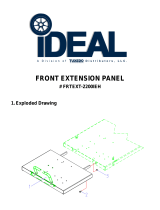 iDEAL by Tuxedo FRTEXT-2200IEH Owner's manual
iDEAL by Tuxedo FRTEXT-2200IEH Owner's manual
-
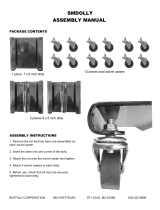 Sportsman 808032 Operating instructions
Sportsman 808032 Operating instructions
-
Black Bull CDOLLY Owner's manual
-
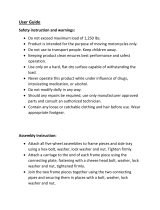 Extreme Max 5001.5077 User guide
Extreme Max 5001.5077 User guide
-
Wen 721218 User manual
-
Wen 721830 User manual
-
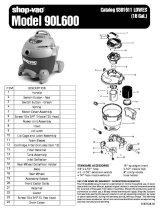 Shop Vac 90L600 Owner's manual
Shop Vac 90L600 Owner's manual
-
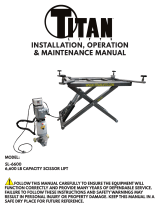 Titan Lifts SL-6600 Installation, Operation & Maintenance Manual
Titan Lifts SL-6600 Installation, Operation & Maintenance Manual
-
National PANTHER 5110 User manual




























